


Dragons are mythical creatures. They breathe fire in our stories and fly through our imaginations. Sometimes they guard piles of gold and are slain by knights.
In the old days, people used to believe in dragons. They were even displayed in maps! The poor dragons were blamed for many unpleasant things. In fact, most things that couldn’t be explained were blamed on dragons, such as disease, failing crops, bad weather and even war.
Dragons as mythical creatures have appeared in most ancient cultures and traditions. They could be a force of good or evil, and live virtually anywhere: in lakes or the sea, in thunderclouds or caves. A common feature of dragons was that they could breathe fire and had enormous power.
In many cultures, dragons were seen as the enemy of people. The Scandinavian hero Beowulf slew the monster Grendel, and also Grendel’s mother that attacked him. Many years later, he defeats a dragon and gets mortally wounded in the battle. In an ancient Babylonian story, the god Marduk famously conquers the dragon and monster of primaeval chaos, Tiamat.
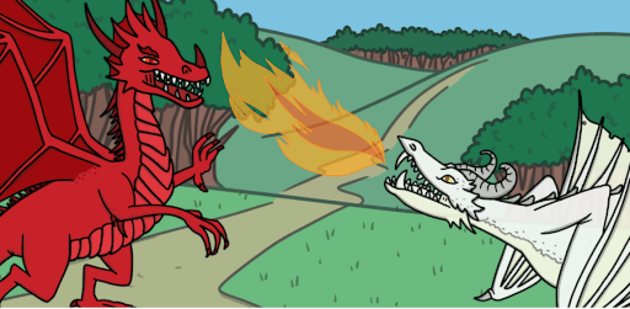
A dragon is also featured in Greek mythology, where it fought for the Titans and attacked Athena. The dragon was eventually defeated and banished to the heavens, becoming a star. One of the challenges that Hercules faced was slaying the dragon Ladon.
The legend of Saint George and the Dragon tells the story of Saint George, who tamed and slayed a dragon that was demanding human sacrifices. He killed the dragon to save a princess and protect a village from the fearsome creature. After his amazing feat of bravery and strength, Saint George became the patron saint of England. Saint George's Day is celebrated every year on the 23rd of April.
The life of a dragon in mythology is much longer than that of a human. On average, dragons are believed to live 1,200 human years – more than 12 human lifetimes!
During that life, they learn a lot about the world and the creatures within it. For example, they might need to know about the gold and jewels that they hoard, or about the potential threats that might come to steal their wealth. Learning and education is very important in the life of a dragon.

The life of a dragon starts with an egg. They go through twelve different life stages, according to some sources of dragon mythology. These stages include wyrmling, juvenile, adult, and Great Wyrm, although different sources call some stages by different names.
Here are the main stages of the life of a dragon:
After the egg hatches, the dragon emerges ready to face life. Shortly after it is hatched, it is ready to fight and fly. It continues growing until it is more than 200 years old, at which point it becomes a mature dragon.
Dragons are mortal and cannot live forever. The life of a dragon comes to an end after the twilight stage. Dragon graveyards cannot be found on maps, but they are believed to be on mountaintops and in hidden valleys that are only accessible to flying creatures.
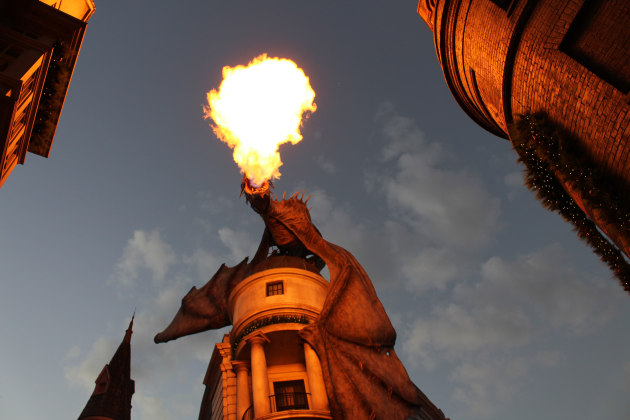
In most stories and myths, dragons breathe fire! But how do they do this? One theory to explain fire-breathing is that dragons go through a similar process to what makes humans burp or trump. Gases produced by digestion (hydrogen and methane) are stored in their body to be released later. The way they expel this excess gas in their system is not through burping, but through breathing fire! Let’s explore how this works below.
Dragons have two kinds of teeth because they are omnivores - meaning they eat both animals and plants. They have sharp teeth for eating meat and flat teeth for eating plants. Some people who write about dragons think that dragons could use their flat teeth to grind rocks, which sounds like a strange thing to do, but other animals, like birds, grind rocks to help with digestion.
Grinding rocks can help with digestion due to the two different stomachs that birds have. One stomach acts the way that the human stomach does, breaking down food with acid. The other one grinds hard food items, such as bones or seeds, against the rocks to break them down. Dragons may have a similar digestion process to birds, meaning that when a dragon grinds up rocks, there would be a residue left on its teeth. For rocks rich in metals, this metallic residue would mix with oxygen in the air and also with the gases released by digestion to produce fire!
There are lots of different types of dragons, each resembling different animals. Read below to find out some different types of dragons.

Wyverns are highly aggressive dragons, with the head of a dragon, the wings of a bat and a serpent’s tail that ends in an arrow or diamond-shaped tip. They can have either lizard or bird legs.
Anthropomorphic dragons have human traits, and sometimes having fingers and toes. They have three legs and shortened forearms. They are highly intelligent and can speak.
Drake dragons are so-called because drake means dragon in Middle English. These dragons are very big with four legs and low-hanging bodies like lizards.
Hydra dragons are water serpents, with more than one head. They can re-grow a head if one of them gets chopped off. Sometimes hydra dragons can have multiple tails, arms or wings too.
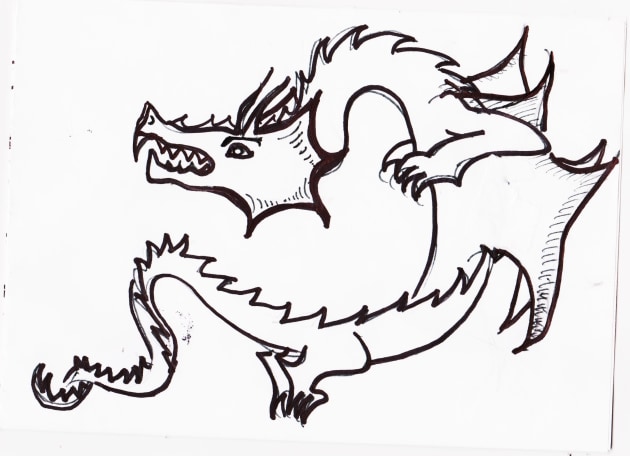
Lindworm dragons are a cross between a horse and a dragon. They have a horse head with a mane and no wings. Their bodies are serpent-like with a dragon head. Lindworms were popular in 11th century Sweden.
Oriental dragons are guardians protecting heaven and guarding people, so they are not dangerous like other dragons. They have four legs with toes and a serpentine body with no wings.
Bring these dragon mythical creatures back to life with our incredible colouring templates. There are so many to choose from - you are sure to find the type of dragon you'll love. Colouring these amazing mythical creatures is a fantastic activity for children to relax and unwind. It can also help to develop pencil control. And they'll be glad to deal with dragons that can't breathe fire!
Dragon Head Template
Dragons in the City Paper Dragon Craft Instructions
Design a Dragon Egg Template Worksheet
Western Dragons are commonly portrayed as evil, cruel and bloodthirsty. They are known to protect massive amounts of gold and jewels in their lairs. An example of a Western Dragon is the dragon defeated by Saint George. This dragon is portrayed in red on the national flag of Wales.
The Eastern Dragons fall into three families. The three-toed dragons are Japanese. Four-toed dragons are Indonesian or Korean. Five-toed dragons are Chinese. They can be coloured red, yellow, blue, white or black. Eastern dragons are commonly illustrated holding a pearl in their mouth, claws or under their chin.
The Chinese Dragon is also known as Long or Lung. Chinese dragons are an incredibly important part of Chinese culture. They can have many animal-like forms, such as a fish or turtle, but most commonly they are portrayed as snake-like with four clawed legs. One of the Chinese celebrations devoted to dragons is the dragon boat race, which has developed into an international sport. The Chinese Dragon is very different from Western Dragons.
Rather than being evil, the Chinese Dragon is a spiritual and cultural symbol that signifies good luck, prosperity and harmony. The dragon is an important part of the Chinese New Year celebrations, during which a dragon dance is performed. It is believed that the longer the dragon dances, the more good luck will come to the community.
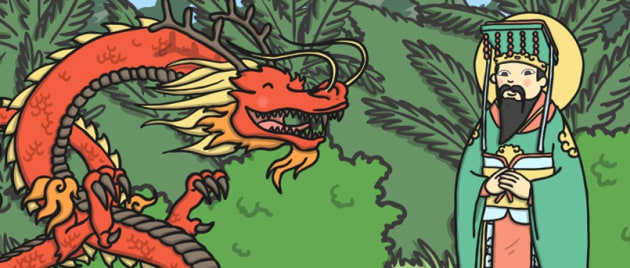
The amazing dragon is a mythical creature which can be found on three flags from different countries.
The Welsh flag has a red dragon on a green and white background. It was the symbol of the monarchy and ancient leaders in the Romano-British period. The dragon was also used as a battle symbol by Henry VII during the Battle of Bosworth Field.
A tiny dragon is featured on the flag of Malta. Right in the top corner, there is a small cross with a picture of the dragon being killed by Saint George.
The flag of Bhutan has a dragon on a funky orange and yellow background. The dragon is holding jewels to symbolise the country's wealth.
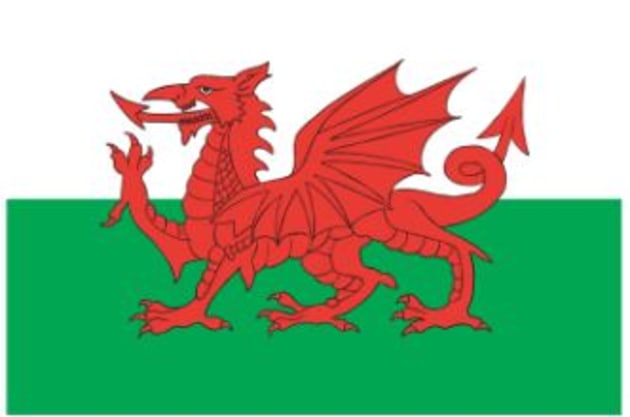
Are dragons real? It’s true that the dragons we’ve discussed so far belong to mythology - fantasy creatures that carry the inflections of the cultures that conjured them. And while there are no real dragons that battle knights, guard gold and breathe fire, there are still real dragons; some of them can even fly!
So the next time a child asks you, “are dragons real?”, show them this list of ten real-life dragons:
Komodo dragons are the biggest lizards in the world. The giant reptiles grow up to 3 m in length and weigh as much as 70 kg. While they can’t fly or breathe fire, their fierce bite helps them kill deer, pigs and even water buffalo. Once their dagger-like teeth have pierced the skin of their victim, the venomous saliva from the predator’s mouth seeps into the wounds.
In 1926, Douglas Burden travelled to the Lower Sunda Islands of Indonesia to capture 12 giant reptiles for the American Museum of National History Museum. His memoirs detail how his wife escaped attack when a fellow explorer shot the creature, and despite the obvious questions around the ethics of the adventure, the Komodo dragon has since been memorialised. Learn more about Komodo dragons here.
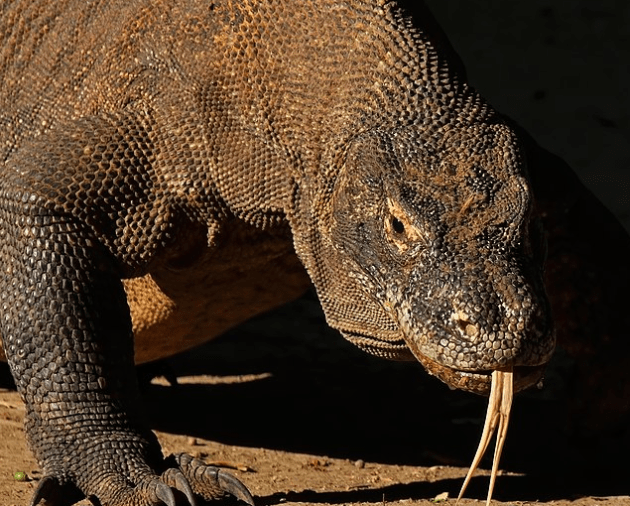
As we’ve already seen, mythological dragons don’t just inhabit the land and the air, but the sea too. So is the case with real dragons; dragonets - ‘little dragons’ - are found in the Indo-Pacific. The creatures get their name because of their dorsal fins, which resemble wings in species like the Seycheles dragonet and the Japanese dragonet. Dragonets live close to the seabed, and their sandy colours offer them some disguise from predators. However, mandarinfish - a type of dragonet - are a radiant mix of blue and orange, allowing them to be less conspicuous in their coral reef home. Mandarinfish release toxins in the mucus that cover their body in order to deter predators. It's a common tactic employed by dragonfish, and the unpalatable smell of the mucus may be the reason that Australians call some of their local species stinkfish!
There are about 5,000 species of dragonfly, and they inhabit every continent except Australia. The biggest species is the giant petaltail of Queensland, Australia. They’re 12 cm long and have a wingspan of 16 cm, and have a fossil record as far back as the Jurassic Period! It’s thought that dragonflies got their name from folklore, as Europeans in the Middle Ages thought their ability to careen dizzily through the air was the work of the devil: indeed, dragon was a byword for the devil at the time. This led people to view the creatures with uncertainty. Absurd accusations were thrown at them, such as claiming they were responsible for stitching the eyes and mouths of sleeping children! Dragonfly larvae are prodigious predators, and wait in burrows for passing prey before devouring them with their highly-adapted mouths.
There are various species of seahorses, which are related to seahorses. The ruby seadragon was discovered in 2015. It's bright red, and can live at lower depths where red-orange light is easily absorbed, providing it with some camouflage. Other species of the fish include leafy and weedy seadragons. The names of both are derived from fleshy protuberances that imitate sea weeds, giving them some camouflage from predators. Both are only found off southern Australia. It’s likely that there are more dragon species yet to be discovered.
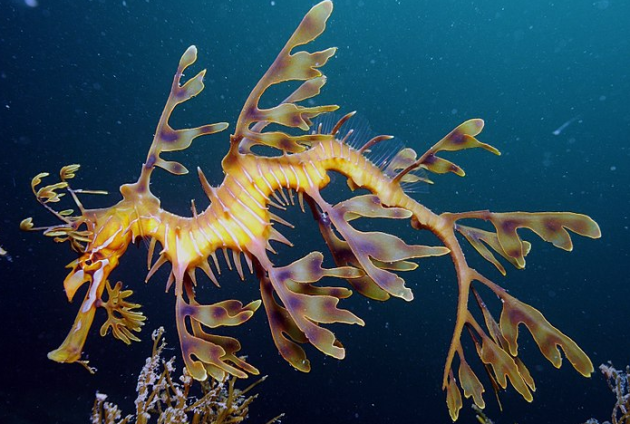
Dragonsnakes are found in Malaysia and Indonesia, although they’re sometimes spotted in Thailand and Myanmar too. They’re shrouded in mystery, and are also called Javan mudsnakes, Javan tubercle snakes and rough-backed litter snakes. The dragonsnake’s binomial name - Xenodermus javanicus - is derived from the rows of ridged scales that feature on its skin (xenodermus means 'strange skin’). They’re around 2 feet in length, and females grow slightly bigger than males. They hunt at night and subsist primarily on a diet of frogs, but little more is known about the creatures.
Bearded dragons get their name from the spiked scales that appear when they puff out their throat. During courtship, aggression and stressful situations, the ‘beard’ turns black. The creatures are popular pets for people all over the world, and all eight species come from central Australia. Throughout the day, their colour changes in order to absorb heat so they can stay warm at night. Central bearded dragons are intelligent, and have demonstrated their ability to imitate fellow dragons in one study.
Perhaps the closest creature to resembling dragons of mythology, flying dragons glide across the forests of South East Asia. Their wings are elongated ribs that support a flap of skin, allowing them to drift around 8 m on average as they leap between trees. And when they don’t need to use them, they simply fold them against their body. The brightly coloured wings stand out against their brown bodies, and when courting, males extend their wings to appear bigger.
Millipedes are the smaller of the dragon species, and appear throughout South East Asia. Their name is derived from the creatures’ pointy projections - known as ‘paranota’ - which are believed to protect their abundance of legs! In 2007, a species was found in Thailand that was 3 cm long - one of the largest of the creatures recorded. Their almond-like aroma warns that they are poisonous, while their bright pink tint further alert predators of their toxicity.
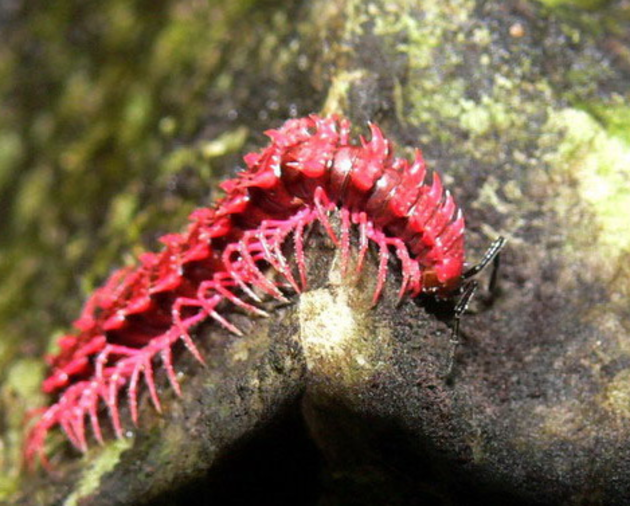
Looking like a monster from a fantasy story, black dragonfish have long bodies and knife-like teeth. The hardy creatures have adapted to live as far as 2 k below the surface of the Atlantic Ocean, where darkness, low temperatures and extreme pressure are all daily realities. Adult females can grow to 48 cm in length, and their large jaws allow them to swallow large prey. They mainly subsist on marine invertebrates and fish; to lure them in, females have an organ with a luminescent tip that dangles from their chin. In contrast, males are just 5cm, have no teeth and don't even have a functioning gut!
Somewhat of a sea slug, blue dragon nudibranchs are often found washed up on the shores of Africa, Australia and south-east USA. They float on their back at the behest of the wind, using a bubble of air in their stomach for buoyancy on the water. Its appearance helps it elude predators; on the bottom it's silver, putting off fish, while on the top its blue, disguising it from birds. They have wing-like protuberances growing out of their body, which have earned them comparisons with dragons, while their stinging cells allow them to paralyse other fish. Despite being only 3 cm in length, the creatures are not to be underestimated!
Twinkl Originals are diverse stories to inspire learning for children aged 0-11. Designed by teachers and children’s authors, the stories can help children fall in love with reading and develop a regular reading practice.
Below are a few dragon-themed Twinkl Originals stories to inspire learning on the topic. Each story comes with a collection of teaching resources to support cross-curricular learning.
Knights and dragons have always been enemies, haven't they? Not anymore! This exciting rhyming story is great for inspiring learning on dragons, castles and knights. Sir Gorrell the knight and Aristar the dragon don't like conflict, and would much prefer it if everyone could get on with one another. One day, they bump into each other in the woods and set out to make peace between their lands. But will they be able to convince the others? The rhyming form makes the story great for learning about poetry, and can even inspire children to write their own verses. The story promotes tolerance and friendship, with an important message: that children should be themselves and make their own decisions.
View the full collection of teaching resources for 'Knights and Dragons, Unite!' here.
This story is perfect for children learning about Chinese New Year. Bo loves Chinese New Year more than anything, and this year, she can't wait to spend it with her cousin, Evie. But what she's looking forward to most is seeing the dragon! Will Evie ever find the dragon that Bo has told her so much about? Find out in this family tale, bursting with excitement and wonder. Along the way, you'll see lots of different Chinese New Year festivities and traditions, including fireworks, lucky red envelopes, wishing trees and food!
View the full collection of teaching resources for 'Dragons in the City' here.
Guster the dragon dreams of saving the day like the heroes in tales he's heard, so when a human army invades his peaceful land, he's determined to defeat them. However, he doesn't expect to make friends with Miranda - a brave human girl! Will the pair be able to come up with a plan to stop the army before it destroys the last home of dragonkind? The story is great for inspiring learning on fantasy stories, and explores pertinent themes like preserving natural environments.
View the full collection of resources for 'The Wyrmstooth Crown' here.
You might think you know everything there is to know about these fire-breathing beasts, but you'll be sure to learn more with these dragon facts for kids!
We hope you have enjoyed all these dragon facts for kids! Why not try impressing your friends with them?
We could hardly write a guide called "What is a Dragon?" without mentioning the Harry Potter series! Nowadays, it's often through the original seven Harry Potter books, and the spin-off series "Fantastic Beasts and Where to Find Them", that children become fascinated by the mythical creatures in the first place.
This is no bad thing, and it so happens that the Harry Potter books make an excellent modern-day introduction to the study of the amazing myths about the creatures. This is because JK Rowling cleverly draws upon different elements of folklore and mythology from cultures around the world to add detail and authenticity to the dragons in her books.
For example, the Common Welsh Green dragon species referred to in the books bears very similar characteristics to the dragon associated with the King Arthur legend, which, incidentally, takes place in Wales. Similarly, the Chinese Fireball dragon bears a striking resemblance to the snake-like dragons celebrated in traditional Chinese culture.
Because of this the Harry Potter books make an excellent introduction for any children obsessed by the question, "what is a dragon?". You could even teach children more about dragons and the mythology associated with them by using our Harry Potter: Design a Dragon Activity Sheet, or check out our full range of Harry Potter resources here.
Chinese New Year Paper Craft Dragon
Chinese Dragon Head and Tail Template
Paper Chinese Dragon Craft Activity
3D Chinese New Year Dragon Fortune Paper Craft
This friendly KS1 Oops Dragon Colour by Calculation Activity will help your students master their subtraction and addition in a playful way.
Children love dragons; why not get them learning while they play fun games and complete tasks with this Dragon-Themed Activity Booklet?It includes crafts, word searches, maths games and more. Children will develop their skills in Maths, English and problem solving, while also practising their fine motor skills. An all-around fantastic resource for all the dragon-lovers out there!
Stuck for assembly ideas? We’ve got your back! Liven up your assembly with this Dragons Around the World Assembly Pack. It includes a gorgeous PowerPoint as well as the script. Everything you need to create the most magical assembly ever!